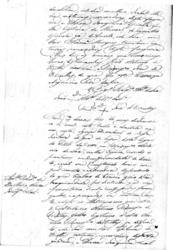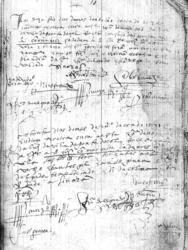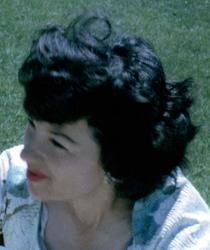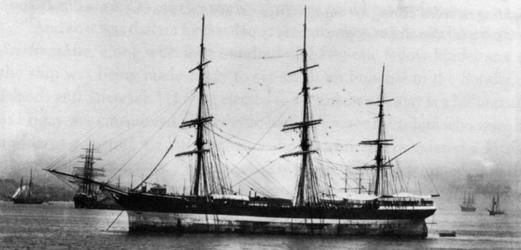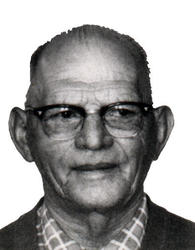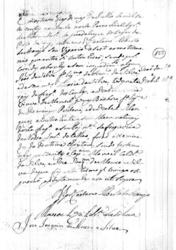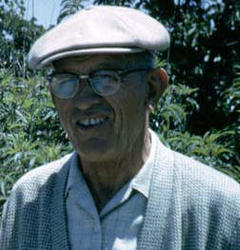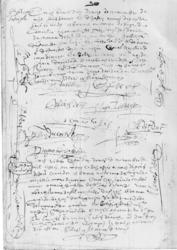| About My Madeira Roots
Please sign in to see more. Antonio Freitas & Julia Agrela - Journey from Madeira to Hawaii to California
In Portugal, there are some common surnames which had a patronymic genesis, but are no longer used in such way. In the same way the surname Soares means son of Soeiro (in Latin Suarius). It comes from Latin Suarici (son of Suarius); the Latin genitive suffix -icius/a was used to indicate a patronymic. After it became Suariz, Suarez and eventually Soares.
Name changes were very common in Madeira as well as Portugal and the Azores. People were given a Christian name (first name) in Baptism. When they grew up, they were to choose a FAMILY name as their first official act (very often at their marriage, or when they bought/sold some property, etc.).
They could pick any surname from any of their family names. If they were mad at their father or brothers, they might pick a different surname from theirs. This is why you may see brothers, sons or daughters with different last names then their parents.
Why Leave Madeira
Madeira has been described as a paradise by many; the nick name given to the islands is The Pearl of the Atlantic. Antonio de Freitas da Silva married Julia Agrela June 22, 1885 for the expressed purpose of leaving Madeira on the next ship as he knew that to remain on the island would only continue what must have been an exceedingly hard existence under repressive economic conditions.
Especially hard hit economically was the Madeiran peasant farmer whose life had been lowered to little more than a subsistence level and now continued on an ever faster downward spiral. By 1885 the island?s continued state of economic decline had severely impacted the already substandard of living forcing Antonio to look elsewhere beyond Madeira where opportunities existed and he could prosper.
Antonio was not as bad off as most since he had a job as an apprentice baker. But as an apprentice, the pay was very little and the thought of even loosing that worried him as well. As with any island, opportunities are limited and the situation always worsens when the population grows beyond what the island can sustain both economically as well as in terms of resources.
This was hardly a paradise by their standards, for their life was one of subsistence. This in part was why crossing a vast ocean at great personal risk and an unknown future was better than remaining on Madeira knowing what the future held.
It was not a hard decision to leave Madeira for the Sandwich Islands as Hawaii was called back then. After all the passage was free and a job was guaranteed on the Sugar Plantations.
Why go from Madeira to Hawaii
Dr. Wiliam Hillebrand, a German botanist, who had returned from Hawaii in 1871 and was residing in Madeira, offered to assist Hawaiian plantation owners in the recruiting of immigrants from the Azores and the Madeiras, since both areas had similar climates to Hawaii. Later, in 1877, he was commissioned by the government of Hawaii to carry out the labor contract as set by the Board of Immigration of the islands, which called for a 3-year stay in the sugar plantations, from the date of arrival. The working month consisted of 26 working days, 10 hours per day. Men received $10.00 a month and women $6.50, paid in U.S. gold or silver. The contract also included lodging, daily food rations, medical care and free medicine, as well as a garden ground where Portuguese grew vegetables for their staples, including the "Inhames", or taro root, a part of the Azores culinary still common in Portuguese homes of California. The daily food rations consisted of 1 pound of fresh or salt beef, 1/2 pound of salt or dried fish; 1-1/2 pounds of rice, 1 pound of taro roots or other vegetables, and 1/3 ounce of tea.
Dr. Hillebrand contracted with Hackfield and Company of Bremen, Germany, for the transportation of these immigrants. The fares were paid by the government of Hawaii at $75.00 for each adult. The first group of these immigrants arrived aboard the "Priscilla" on September 30, 1878, and many followed thereafter, originating both in Madeira and San Miguel in the Azores.
This was an offer that many could not refuse. There was only so much you could do on Madeira, being that this island nation is only 13 mile wide and 26 mile long as well as 6000 feet high. The island itself is 300 miles North West of Morocco and 950 miles South West of Lisbon, Portugal.
The Family
Antonio Joaquim de Freitas Silva married Augusta Constantina Soares in 1856 on Madeira. On May 18, 1857 they gave birth to their son, Antonio. It is believed that Antonio was their first born. Their son Antonio went by the name Antonio da Silva.
Antonio de Agrela married Claudina de Ascensao in 1847 on Madeira. On December 5, 1861 they gave birth to a daughter, Julia
Antonio da Silva and Julia de Agrela were Married on Maderia June 22, 1885, the same year that they set sail for Honolulu, Hawaii.
Antonio first used da Silva, his father's name and then changed it to Freitas, his father?s other name. Julia, likewise, used the name Freitas, Frates and even signed her daughter Elizabeth's Birth Certificate and Baptism as Julia Ascensao.
Antonio de Freitas da Silva and Julia de Agrella had decided that they wanted to start a new life together in a new land. So they decided to get married June 22, 1885 in São Pedro, a district of Funchal and sail to this new land called Hawaii on the next ship. They applied and received their passport for Travel to Hawaii on November 14, 1885. They took along with them, Antonio's sister in-law, Antonia de Ascensao, the sister of Julia. Ascensao is the maiden name of their mother.
Antonio, Julia and Antonia arrived safely at the busy port anxious to board the ship that would take them halfway around the world. Their families watch, knowing that they would never see them again as they were ready to board. The ship was named the Stirlingshire.
The Stirlingshire
There were two ships with the name Stirlingshire. The ship that Antonio and Julia sailed on was a smaller wooden hulled vessel built in New Zealand in 1848. Her home port in 1885 ? 1886 was Youghal, County Cork, Ireland,and her official number was 24868. The signal flag letters were PCNT.
The Long Journey Begins
The Stirlingshire, according to the Agreement and Account of Crew records, departed from Liverpool, England at 9:27 A.M. On Tuesday, November 10, 1885, on a voyage which included stops at the ports of Funcal, Madeira, Honolulu, the Sandwich Islands, Astoria, Oregon and finally the port of Portland, Oregon, before returning to England. The first reported sighting of the Stirlingshire after departing Liverpool was at Holyhead, Wales, at 6:27 P.M. on Tuesday, November 10, 1885, followed by her arrival off Tuskar Rock, Ireland on Thursday November 12, 1885. She arrived at Funchal, Madeira ten days after departing Liverpool on Friday, November 20, 1885, and made ready to receive the many passengers and cargo that would accompany her on the long passage to the Hawaiian Islands that would soon get underway.
Antonio and Julia along with the sister of Julia, Antonia de Ascensao boarded the Stirlingshire on that day along with four hundred and thirty three fellow Madeirans, as the ship was being made ready to set sail from Funchal to the Hawaiian Islands and a new life. As the Stirlingshire departed Funchal, she held a total of five hundred and nine souls made up of four hundred and fifty five Madeirans in steerage, 152 men, 101 women and 202 children as well as eight Scotch crofters with their three sheep dogs and one First Class passenger who had boarded earlier in Liverpool. The First Class passenger was one Hugh Kawelo, a Hawaiian who was returning home after completing three years of apprenticeship in the iron works of Messrs. Mirlees, Watson & Co. of Glasgow, Scotland. Also aboard the ship was her crew of forty five.
Stirlingshire has its first Death
On Thursday, January 7, 1886, on the forty first day of the voyage, off the coast of Argentina near the Straits of La Marie, a women by the name of Maria de Freitas Pereira, age 46, was the first passenger to die and be buried at sea. Her husband was Joao Pereira da Silva, age 49. It is not know at this time if they are part of the family of Antonio. Maria de Freitas Pereira?s son, Manuel Pereira, some years later stated that his mother died of fright aboard ship after a cannon was fired to celebrate the first sighting of land since departing Madeira. Soon after her death she was sewn into a simple cloth sack weighted down and placed on a plank at the edge of the ship?s railing. After a brief service her body was dispatched overboard into the cold relentless sea. Her saddened children were all watching from the railing as the distance grew between them with the mother's body bobbing in the ship's wake. The Captain told the family that she would go under the waves twice before disappearing. Twice she sunk below the surface before reappearing in the waves and on the third time she disappeared forever below the sea. By the end of the voyage there would be four children that joined her in the wake of the Stirlingshire as the ship made her way slowly towards the Hawaiian Islands. The children who died during the voyage were Victorina D'Audrade age five months who died on Wednesday, January 13, 1886, followed by the death of Marie d'Ascencao aged eight hours on Sunday, January 24, 1886. (It is not know if this was a relation to Antonio's sister in-law Antonia), Emanuel de Sousa aged one year and eight months who died on Friday, January 29, 1886, and the final death on Thursday, February 18, 1886, of seven month old Marie Perreira. By the time the Stirlingshire reached Honolulu there had been a total of seven births and five deaths.
According to Captain Alexander, the trip around Cape Horn took the Stirlingshire two weeks to complete. One passenger recalled that sailing around Cape Horn in January was at the mercy of the ever present wind and currents. The ship would make great progress forward one day and the next day she would lose a good deal of distance because of the shifting winds and strong currents, thus setting them back and adding to the length of the voyage. One story was that on a particularly bad day the ship was blown backwards three hundred miles before being able to once again gain headway in its progress towards the Hawaiian Islands. Added to this was the fact that the passengers were ill-prepared for the cold damp weather that greeted their passage around Cape Horn since they only had the clothes that had served them so well in the tropical climate of Madeira.
Honolulu, Hawaii
After ninety six days at sea, the Stirlingshire arrived in Honolulu on the evening of Tuesday, March 2, 1886, ahead of schedule. She had not been expected to arrive until later that month. The Stirlingshire was the fifteenth ship to arrive in Hawaii carrying Portuguese immigrants since Portuguese Immigration began in 1878.
After arriving in Honolulu, Captain Alexander as quoted in a Honolulu newspaper said, "A very pleasant passage. First four days out of Liverpool we had light east winds, thence to Madeira. After leaving Madeira, we had calm for two days, then fine weather to Cape Horn."
The Stirlingshire was not able to dock at first when it arrived because the tug, Eleu, that would assist ships to dock was under repair. The ship finally made port on the morning of Thursday, March 4, 1886, around 9:00 A.M., much to the relief of the frustrated passengers. The condition of the passengers was reported by an immigration official who boarded the ship that, "the ship was in splendid condition and very clean." It was also noted that "Soon after the vessel comes into port this morning the officers of the Board of Immigration will go aboard and arrangements will be made for the transfer of the immigrants to the Immigration Depot at Kakaako."
The ship's surgeon, John Weddick, L.R.C.S., reported that. "At the port of Funcal I received from Mr. Hutchinson 451 Portuguese passengers, examined and passed by the Port Doctor there. I am happy to be able to report no infectious or contagious diseases broke out on the voyage."
For the very tired immigrants there was now five days of well deserved rest in quarantine during which time they had to attend to the various official functions of newly arrived immigrants, such as applying for a visa issued to immigrants families by the King of Hawaii, as well as the signing of contracts and various other papers, medical examinations and finally to appear before the Portuguese Counsel and register before being given an assignment to a plantation.
Life in Hawaii on the Plantations
It was no secret that the plantation owners and managers wanted cheap labor. Once the immigrates arrived at the plantation, workers were assigned to a cottage in the camp and were given a number stamped on a metal tag clalled a bango, which from then on was used to identify a worker who was referred to only by his number. The tags had to be worn at all times by the employee. The bango system is still in use today.
The personal price that Antonio and Julia paid for a better life, after crossing a vast ocean at great personal risk and then having to reestablish their humanity on the plantation, was just another of the indignities that they were forced to endure in order to realize their dreams of a better future. A price that they were willing to accept!
Labor contracts in the 1880's, like the one that Antonio signed, stipulated among other things the term of a worker's obligation in number of years, usually three for the Portuguese, required in payment for the ship passage to Hawaii. It also stated that an immigrant could be moved to other plantations wherever the company or the Sugar Planters Association needed them. Other general conditions that would govern those indentured during the terms of the contract included that each family received a private cottage, a garden space for growing vegetables, water and cooking fuel, as well as free medical care and medicine. However, wages where not to be paid when someone was sick. Workers were also guaranteed extra pay for working on Sunday and received some annual holidays credited against working days. A basic contract for the Portuguese in 1886, required 26 days each month at 10 hours per day for 3 years, with a payment of about $9.00 per month.
Workers were paid twice a month on Saturdays when after presenting their bangos they received their cash envelopes. A Voting Poll Tax of $1.00 was deducted from their pay but workers were not allowed to vote in local elections. After exiting the pay line, workers were greeted by a second line of creditors who required payment of various services that had already been rendered.
A typical work day consisted of a wake-up siren sounding at 4:30 AM, followed by a second wake-up siren at 5:00 AM, then a work warning siren at 5:30 AM. Those that did not respond were rousted by company policemen whose duty it was to forcibly remove workers from their beds. Work would begin at 5:45 AM sharp with a thirty minute lunch starting at 11:00 AM. The workday ended each Monday through Friday at 4:30 PM, and on Saturdays at 3:30 PM. The end of the work day, like the beginning, was declared with a siren.
At 8:00 PM another siren was sounded and by 8:30 PM the camps lights were turned off and all laborers were expected to be in bed. Once the lights went out the rules stated that there would be not talking. The management wanted to make sure that all energy was preserved for the fields.
As hard a life as this may sounds, in general the laborers where not mistreated and physical punishment was against the law in Hawaii. There were instances of physical mistreatment as well as intimidation to the laborers, but in general the management wanted the laborers to be well feed and taken care of so that they could produce more profits for the company.
In order to make sure that the laborers followed the rules, fines for infractions to the rules were posted and assessed. The fines posted consisted of amounts for underproductive, damage to equipment, disorderly behavior, brawling and gambling among other things. Each violation amounted to the worker's wages being docked the amount stipulated for each infraction.
One of the hardest things for the Portuguese immigrate to accomplish, was to learn English. But even harder was that the English that was being used was "Pidgin English", which is made up of a fractured English interjected with Hawaiian, Japanese, Chinese and Portuguese words, all the nationalities that were working as laborers and management.
Antonio and Julia had six children; three of their five living children were born in Honolulu, Manuel, Maria and Carlos also known as Charles. It is not know when or where the child that died was born or died.
Children were;
Manuel born April 1, 1887 died June 16, 1968, married Virginia Duarte Pastana July 29, 1911
Maria born April 30, 1889 died Unknown, married Mr. Rodgers 1907, William Winfield Washburn 1918, Mr. Kay sometime after 1964.
Carlos born June 7, 1891 died September 26, 1975, married Isabel Elizabeth Ferreira September 17, 1921
Alfred J. born January 20, 1894 died March 22, 1970, married Marie Teresa Muniz Alice Elizabeth born March 14, 1899 died October 23, 1964, married John Freitas Santos May 20, 1915
Next Stop California
Antonio, Julia and their three children that were born there, Manuel, Maria and Carlos, stayed on the plantation well over the contracted time of 3 years. In 1898 the United States annexed Hawaii making all persons born there American citizens. With Hawaii being annexed, there was a lot of talk of better wages and opportunities in California. Antonio, Julia and their 3 children decided that it was time for another adventure for a better life.
Hawaii to Oakland, California
When Hawaii became annexed by the United States, this gave Antonio and Julia the chance to move to the U.S. mainland. Although their death certificates show that they came to the United States in 1892, the 1910 census states it was 1894.
After they arrived in the U.S., they bought a house at 1008 East 19th Street in Oakland, California. In the backyard, Antonio built a fish pond with a water fall. This seems to be a tradition that has been carried down through the ages. Sometime prior to 1920, they moved to 2010 East 19th Street Oakland, California
Soon after moving to Oakland, California they had two more children, Alfred and Alice. In 1910 Antonio was working as a longshoreman. In 1910 he along with two of his sons, Charles and Manuel worked for the Southern Pacific Railroad as laborers. Throughout there years, both Antonio and Julia could speak both English and Portuguese, but neither could read English.
On June 5, 1917 Charles, Manuel and Alfred all went to register for the Army together. All their registration cards show their last named spelled as FRATES. Charles and Alfred were both working for the Stone Ship yard, hand building ships in San Francisco.
Charles stated on his Army registration card that his birthday is June 11, 1891 all other documentation shows his birthday on June 7, 1891. On April 29, 1918 Charles enlisted in the Army in Oakland, California. He was given the serial number of 12 782 9681 and sent to Fort Kearney, California, about 20 miles east of Oakland. He was assigned to a Machine Gun Company of the 364th Infantry, 91st Division. Charles left for Foreign Service on July 12, 1918 and arrived in France sometime after that. Between September 12, 1918 and September 13, 1918 he fought in the St. Mihiel Salient offensive. Between September 26, 1918 and October 12, 1918 he fought in the Meuse-Argonne offensive. Between October 20, 1918 and November 11, 1918 he fought in the Ypres-Lys Offensive. During his time in France he became acquainted with a young lady and became very involved with her. It is not known whatever happened to her, but she was always in his thoughts and he kept her picture for the rest of his life.
Charles returned from Foreign Service on March 31, 1919 where he arrived in New York and then was sent to Camp Kearny where he arrived on April 23, 1919. On April 25, 1919 he was officially mustered out of the service and was given $102.00.
Carlos Freitas and Isabel Ferreira were introduced sometime around 1921, he was 30 years old and she was 17. They had an affair and she became pregnant. Charles did the honorable thing and married Isabel on September 17, 1921 in Oakland, California.
Alice, the youngest daughter of Antonio and Julia had an arranged marriage with a friend of Antonio?s from Madeira. His name was Joao de Freitas dos Santos also known as John Freitas Santos. He sailed to the United States from Madeira in 1910. On May 15, 1915, he and Alice were married in Oakland, California. Some time after his last child was born, William, October 13, 1917, he returned to Madeira. There are two stories as to why he went back. One was that he was sick and went back to die and the other was that he simply left because he did not like it here and missed his home land.
The End of an Era
On October 21, 1929 about 7:30 PM, a man with only one eye, Ernest Pavon, and his five year old daughter were driving north on 23rd Avenue in Oakland in his 1929 Durant sudan. They made a turn on 15th Street as they were traveling about 30 mph. Pavon then saw an object right in front of him. He swerved to the right, but still hit the object with his left front fender. He then applied his brakes and turned to the right. He then saw that he had hit a man, Antonio Freitas. Pavon and some other men carried Antonio off the street.
Antonio was taken to Highland Hospital. He was confined to bed with a fractured femur and clavicle. On November 17, 1929 Antonio died of hypostatic pneumonia while still in the hospital. He was 72 years old.
Antonio was buried at the Holy Sepulchre Cemetery in Hayward, California on November 20, 1929 in section N. The name FREITAS was misspelled on the grave stone as (FRAITES). It is noted that in the 1930 census Julia had her last name spelled FRAITES. Since Julia could not write in English it is believed that she modified name in error.
Julia sued Ernest Pavon for negligence only to have to pay Pavon for all his court cost.
Nine years later, October 12, 1938, Julia died of hypostatic pneumonia as did Antonio. On October 15, 1938 she was laid to rest with Antonio. She was 76 years old. Julia's last name on the grave stone is Frates, as she had spelled it.
|

